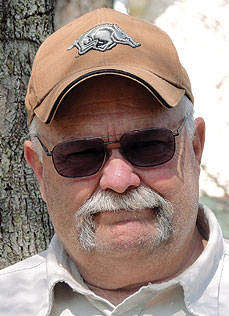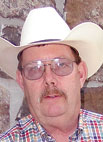
In 1983, Larry James of Hindsville, Ark., and his father Darrel began piecing together land in hopes of someday having a full-time farm.
Larry retired from town life in 2003 and began living his dream, using skills he began learning in childhood from his grandfather in Oklahoma. He now has around 300 cows, 20 heifers for spring breeding, 21 for fall breeding and 92 more to be bred later.
Larry remembers the popularity of some exotic breeds, but through experience found calves too large at birth.
“I don’t like pulling calves so about 20 years ago I returned to foundation Angus bulls and have pulled only three calves in the last seven or eight years,” Larry said.
Larry’s heifer calves now weigh about 60 pounds at birth, with the bull calves weighing 5 to 10 pounds more.
Better birth weights, however, are only part of Larry’s goals. He is also striving for better and more uniform cows and calves that convert grass to pounds quickly and efficiently.
Larry has devised a tagging and recording system that makes identifying calves’ parental background simple and the performance of any herd animal easy to access when making breeding and culling decisions. Each calf has one ear tag with the same number as its mother and one of six colored tabs to identify which of the 11 bulls or “flush brothers” fathered the calf. In addition, each calf is entered on its own 5-by-7 card where birth, weaning and growth rates are entered. If a cow doesn’t produce and have good maternal traits, she’s culled. If routine weighing indicates a subpar calf, it’s gone. Decisions are ruled by the numbers.
The tagging and a card system makes tracking bull performance assessable as well.
Five years ago, Larry added a SimAngus cross bull and tracked its influence on the herd. While steers showed no difference, the heifers demonstrated higher milk production and were more docile.
“If my cows are doing what they’re supposed to be doing, I shouldn’t have to supplement except in extreme conditions,” he explained.
Larry found and purchased what he described as “good” group of Angus cows with the intent of raising his own bulls for creating a unified herd.
“I want to be unable to tell the difference except that one is facing south and one north,” he said.
Last fall Larry selected 16 of those cows and transferred 16 sexed embryos. As a commercial breeder, he said he was more interested in bloodlines than papers. He calculated if he had a 50 percent conception rate, he would recoup the cost of a single bull for his new cow herd with one productive embryo transfer bull. He plans a breeding program to create three-quarter sisters in order to achieve a predictable and sustainable calf crop quality.
“If I get my cows right, the steers will take care of themselves,” Larry said “The price difference between an average calf and a good one keeps getting larger, and I’m trying to figure out the best way to get good calves on a continuing basis.”
Larry’s goal is to sell 700-pound calves straight off the cow after having one round of vaccinations.
Drawing on his experience in business, Larry does everything he can to keep overhead down which means doing as much as possible without outside help. To keep vet costs at an absolute minimum, he keeps medical supplies on hand, which range from a variable vaccination gun to syringes and antibiotics to needle and thread for prolapsed cows.
Another aspect of self-sufficiency is haying. Larry leases 100 acres of Bermuda and hays a total of 1,800 large bales per year with most stored under shelter. His wife Kim is actively involved. Kim said, “I just love to get in a tractor and help with the haying.”







